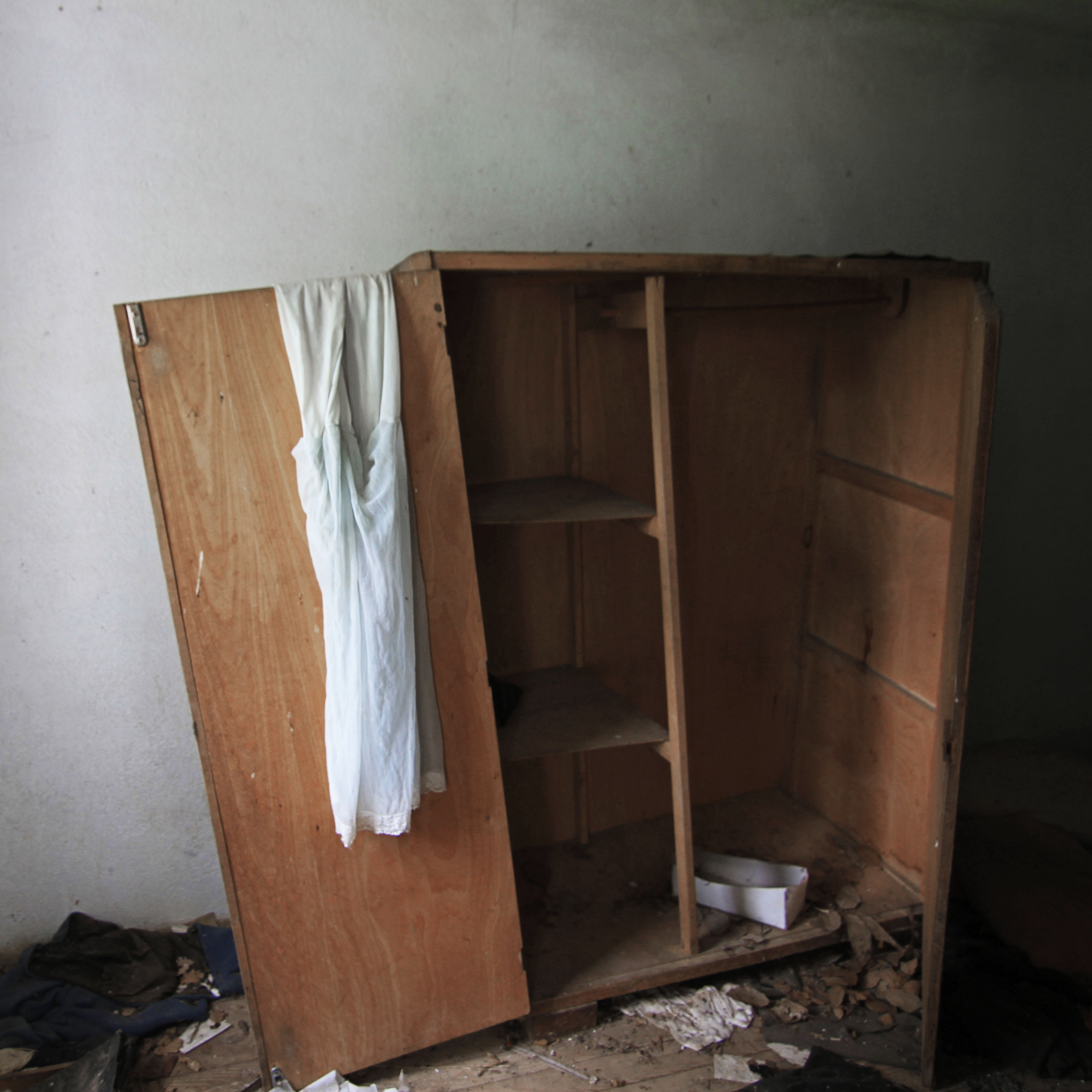
‘the curtain is open, the actors are absent’[1]
(…)
My physical presence here unexpectedly turns emotionally challenging. I hesitate to move around, but stand in the midst and stare at the objects around me. I can now experience bodily the atmospheric quality of this interior. I can smell and feel the cold, walk on its surface. Absurdly, I feel like an intruder in someone’s private space. I hesitate to touch, but after a few moments begin to move about.
(…)
Signs of violence are everywhere.
Personal belongings, clothing, shoes, boxes, handbags, papers are scattered everywhere. I inspect garments that are spread about, smelling the aging fabric that has lain here for years, exposed to dirt, rain, flood, snow, and most likely animals.
All the items seem to be female. My feelings continuously shift as I move through: fear, shame, empathy, profound sorrow. The atmosphere of this space reflects a deep sense of loss, damaged and interrupted life, trauma. The scent of decomposing fabrics and damp wooden objects blends with the fusty odor of mould. Natural light penetrates from one side; the other remains dark and cold. Again, absurdly, I feel ashamed for being inside someone’s personal space, even more poignant since it is completely wrecked.
I feel as if it reveals their most intimate trauma.
I feel I am not allowed to be here; I am just another intruder. A wide-open, broken wooden wardrobe leans against the wall.
An inside-out silk dress is draped over its precariously-hanging door. This is the most disturbing image, embodying deep symbolic content.
The softness of the fabric contrasts oxymoronically with the violently pulverized and vandalized space. Its physical presence, almost casually tossed over a hanging door, speaks loudly of a former life. An inside-out dress? It may have been left here in haste. It looks like a nightgown.
My heart starts beating very fast.
This soft garment, hanging in an obliterated and abandoned interior, sums up for me the tragedy of ordinary lives caught in the vortex of catastrophe… Many other objects also lie about the floor. Someone has likely gone through here and vandalised it after the inhabitants escaped the conflict. Intruders, soldiers or vandals who came after – perhaps stumbled into these rooms and rifled through all the personal items, looking for ‘things of value’.
My aloneness terrifies me. My instinct is to run out.
Yet, this genuine experience of fear adds truth to my experience of the space.
(…)
The room belonged to a woman. She was young, or middle-aged.
A dressing cabinet with a large mirror frame stands against the back wall. The mirror is broken in pieces on the floor. A box full of books, newspapers and magazines sits in front of the cabinet. They are damp and smudged. Titles and dates on them are unreadable.
Mattress and quilts lie on the floor. The bed frame is missing.
A floral patterned dress lies on top of the mattress…
(…)
I feel as if I am less of an intruder because I am a woman. I feel a strong sense of respect, empathy for her pain, her trauma.
Her intangible presence is truly here.
[1] Josette Feral, “The specificity of theatrical language,” SubStance, vol. 31, no. 2/3 (2002): 95